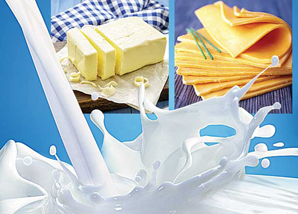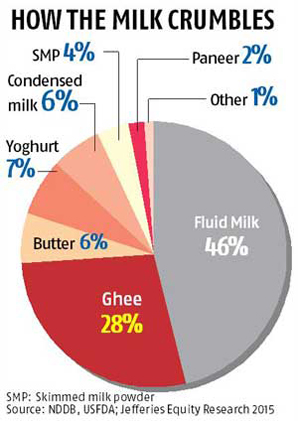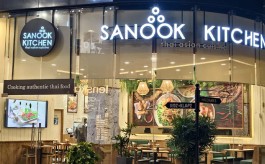Milking the value chain
By Pankhuri Goel | July 29, 2015
The dairy market is seeing a shift in consumer preferences as branded, value added products, bring in the bacon
 A number of dairy brands have made it to the list of top 20 in the recent IMRB-Kantar survey: Amul is the undisputed leader of the pack at number 3 but several others, regional and not as well-known such as Aavin, Milma, Mahananda, Nandini are all part of the top 50. The study which measures reach and penetration of brands looks at how often a product is purchased. And going by its findings, more and more Indians are buying their milk in branded plastic pouches, bottles and cartons instead of the grey market. Also, value added dairy products such as ghee, butter, cheese are in demand and that is driving these brands up the rankings table.
A number of dairy brands have made it to the list of top 20 in the recent IMRB-Kantar survey: Amul is the undisputed leader of the pack at number 3 but several others, regional and not as well-known such as Aavin, Milma, Mahananda, Nandini are all part of the top 50. The study which measures reach and penetration of brands looks at how often a product is purchased. And going by its findings, more and more Indians are buying their milk in branded plastic pouches, bottles and cartons instead of the grey market. Also, value added dairy products such as ghee, butter, cheese are in demand and that is driving these brands up the rankings table.Customer preferences are changing and so are their spending patterns. As a result, the share of value added branded products in overall revenues, has been rising steadily. R S Sodhi, managing director of the country's largest dairy cooperative Gujarat Cooperative Milk Marketing Federation (GCMMF) which owns Amul said, "We primarily sell branded products. Around 95 per cent is in branded products, only 5 per cent is as commodity. Of this 95 per cent, around 50 per cent comes from value added products like cheese, ghee, paneer etc."
Many dairy companies say that the share of liquid milk has more or less remained stagnant while that of value added products has grown. Maharashtra based, Parag Milk Foods has seen its turnover rise from around Rs 450 crore in 2009-10 to about Rs 1,400 crore in 2014-15, but the share of liquid milk has remained almost static; from Rs 200 crore in 2009-10 to about Rs 300 crore now. As Shirish Upadhayay, senior vice president, strategic planning, Parag Milk Foods said,"Our topline has grown by around 20 per cent in the last few years, branded value added products have clocked a higher rate of growth." For Parag, liquid milk constitutes less than 20 per cent of its turnover; whereas around five years back it was a 50:50 split between liquid milk and value added products. As for the market size of branded value added dairy products in India, it is a tough ask, simply because the sector is highly unorganised with several local brands as well, especially in the categories like paneer and ghee.
Upadhayay said that nearly one-fourth of the dairy market in India is organised. However, "consumption patterns in households are changing. Earlier, liquid milk was churned intochaas, ghee, curd, paneer at home. Today's consumer, however, prefers to buy these products off the shelf," he added. A report by Jefferies Equity Research India on the dairy sector highlights the same. "Superior growth rates for organised players in the past few years (around 20 per cent vs industry at around 13 per cent) are indicative of this shift, and should continue for several years to come," the report said.
 The reason is obvious, value added products offer more margins. For example, Jefferies highlights that in comparison to the gross margin of 6.5 per cent in pouch milk, for gheeand skimmed milk powder it is 27.4 per cent, and for cheese and butter it is 60 per cent. The Jefferies report further says, "NSO surveys on household expenditure suggest that the consumer spend on milk and milk products grew around 12 per cent per annum over FY02-12 - very similar to the increase in production value of the sector during this period. Private dairy companies, however, have grown at a faster pace of 15-20 per cent."
The reason is obvious, value added products offer more margins. For example, Jefferies highlights that in comparison to the gross margin of 6.5 per cent in pouch milk, for gheeand skimmed milk powder it is 27.4 per cent, and for cheese and butter it is 60 per cent. The Jefferies report further says, "NSO surveys on household expenditure suggest that the consumer spend on milk and milk products grew around 12 per cent per annum over FY02-12 - very similar to the increase in production value of the sector during this period. Private dairy companies, however, have grown at a faster pace of 15-20 per cent."Interestingly, while milk production in India is high, close to 40 per cent of the milk produced is consumed in-house, and more than 70 per cent of the marketable surplus is procured by the unorganised segment. Value addition in the industry is fairly low. While tastes are changing, the report by Jefferies notes that Indians have a long tradition of consuming fresh milk, and dairy products are either prepared at home or purchased from unbranded players. "Nearly half the volume is consumed in the fresh liquid form. Ghee (clarified butter) and skimmed milk powder (SMP), which are the relatively commoditised dairy products, account for another 30 per cent," it said. It is these commodities that consumers are now buying off the shelf instead of churning them up in their kitchens.
Another interesting trend is the gradual shift towards branded cow milk products. Companies like Parag have focussed on the segment (it owns the premium Pride of Cow brand). Upadhayay said that Indians have traditionally always preferred cow milk over buffalo milk as it is a healthier option; however, the issue always has been that of availability. Jefferies says, "In contrast to other countries, buffalo milk forms a large proportion (51 per cent) of production in India. However, this mix is changing in favour of cow milk on account of less seasonality in production during the year and increasing consumer preference for low fat products." This in turn is helping the dairy companies cash in, as cow milk products garner a premium of about 10-15 per cent over buffalo milk, Upadhayay claimed.
Advertisement








